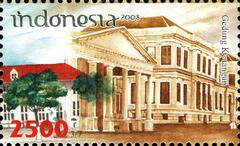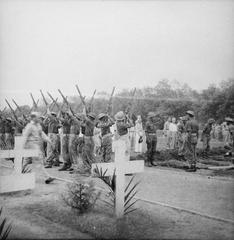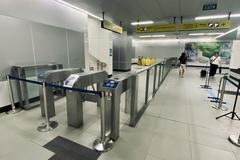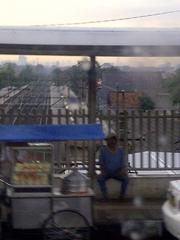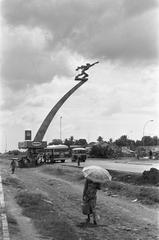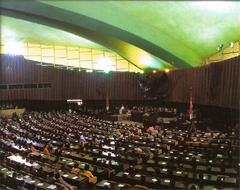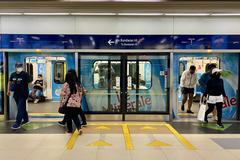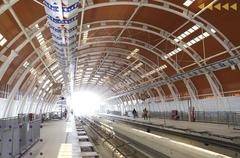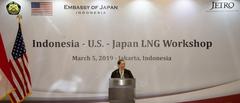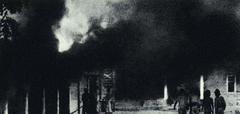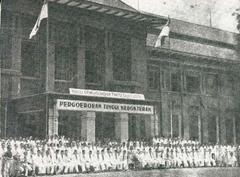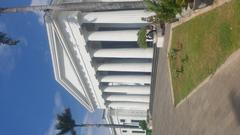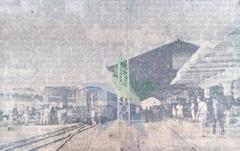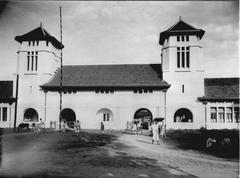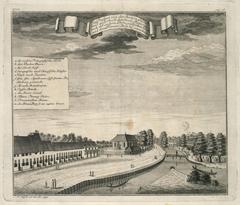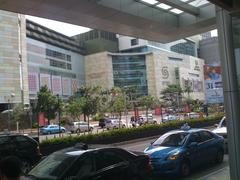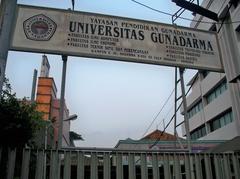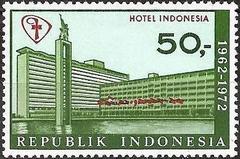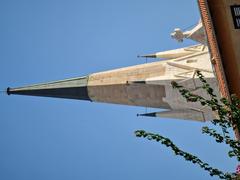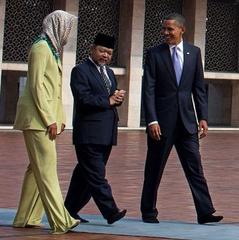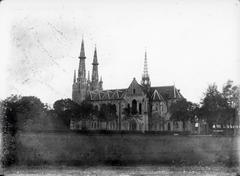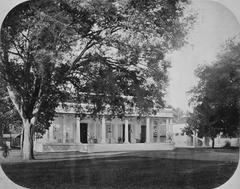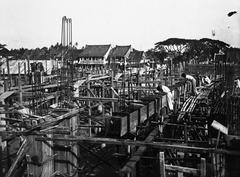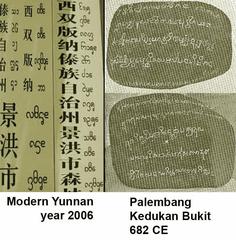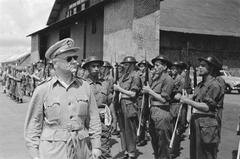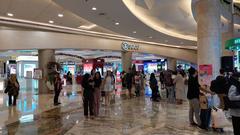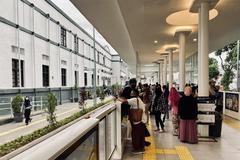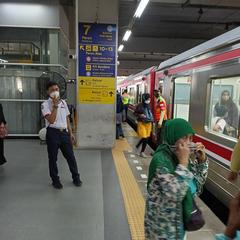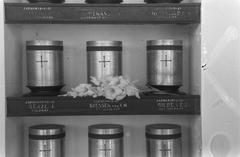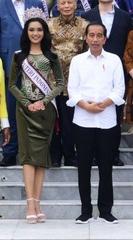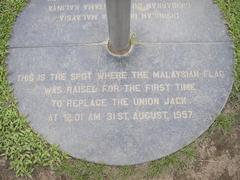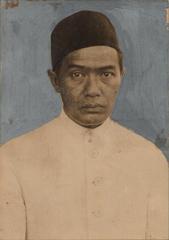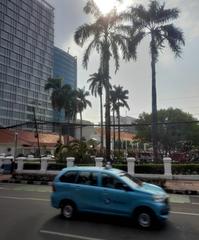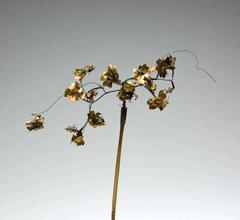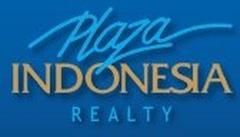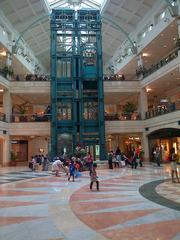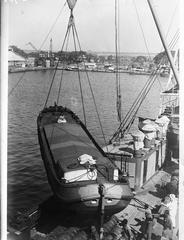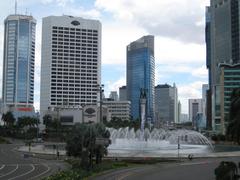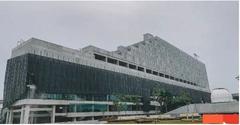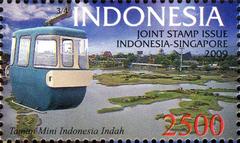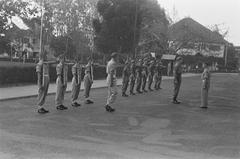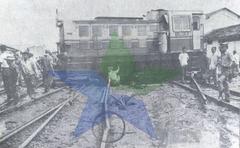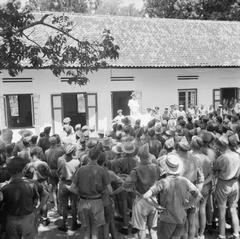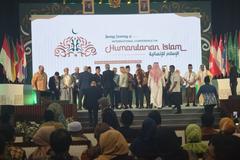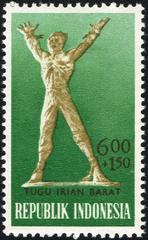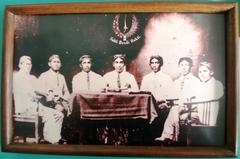Antara Jakarta Visiting Hours, Tickets, and Historical Sites Guide
Date: 14/06/2025
Introduction
Jakarta, the vibrant capital of Indonesia, is a city steeped in history and cultural diversity. At its heart lies Antara, Indonesia’s national news agency, whose legacy is deeply entwined with the nation’s struggle for independence and its ongoing evolution. The Antara Photojournalism Museum, located in the historic Pasar Baru district, offers a unique window into Indonesia’s journalistic heritage, showcasing iconic photographic collections and educational programs that illuminate the nation’s journey from colonial times to modernity (Now Jakarta).
Surrounded by Pasar Baru’s colonial architecture and a tapestry of ethnic communities, Antara provides visitors with a multifaceted experience. Nearby landmarks such as the Istiqlal Mosque, Jakarta Cathedral, and the National Monument (Monas) further enrich an exploration of the city’s dynamic heritage (explorecity.life; thehoneycombers.com). This guide covers Antara’s historical significance, practical visiting information, cultural events, and adjacent attractions to ensure a comprehensive and rewarding visit.
Historical Evolution of Jakarta
Jakarta’s history dates back to the 4th century CE, beginning as Sunda Kelapa, a significant Hindu settlement and trading port. Over the centuries, the city witnessed a succession of rulers: from the Indianized Tarumanagara Kingdom and Sunda Kingdom, to the Muslim Banten Sultanate, and eventually European colonial powers (History of Jakarta - Wikipedia).
The Dutch East India Company (VOC) established Batavia in 1619, transforming it into the economic and administrative center of the Dutch East Indies. Batavia’s canals, fortifications, and European architecture became defining features. Urban expansion continued with the introduction of trams in 1869 and new districts, and during Japanese occupation in World War II, Jakarta played a pivotal role. Following Indonesia’s independence in 1945, Jakarta’s rapid urbanization and modernization—especially under President Sukarno—saw the construction of significant landmarks like Monas and major thoroughfares (History of Jakarta - Wikipedia). By the mid-20th century, Jakarta’s boundaries and influence had expanded, cementing its position as Indonesia’s political, economic, and cultural hub.
Today, Jakarta is a melting pot of Javanese, Sundanese, Chinese, Arab, and European communities, each contributing to its rich traditions, cuisine, and architecture (Over Your Place). The city stands as a beacon of Indonesia’s dynamic heritage.
The Emergence and Role of Antara
Founding and Early Years
Established in 1937 by Adam Malik, A.M. Sipahoetar, Soemanang, and Pandoe Kartawigoena, Antara became Indonesia’s national news agency, providing an indigenous alternative to colonial news sources (Now Jakarta). During the independence struggle, Antara was instrumental in disseminating the 1945 Proclamation of Independence, solidifying its place in the nation’s history as a guardian of press freedom.
Headquarters and Photojournalism Museum
Antara’s headquarters is located at Jalan Antara No. 59, Pasar Baru. The district itself is renowned for colonial-era architecture and a vibrant multicultural atmosphere. The Antara Photojournalism Museum, founded in 1992, is adjacent to the office, overlooking the historic Ciliwung Pasar Baru Canal (Now Jakarta).
The museum preserves and showcases Indonesian photojournalism, hosting exhibitions, workshops, and educational programs. Its collection includes iconic images from the independence movement and major political events, providing a visual narrative of Indonesia’s journey.
Cultural and Social Significance
Antara has shaped Indonesia’s media landscape and advocates for press freedom. Its archives are a vital resource for historians and the public, while the museum’s exhibitions explore themes of social justice, diversity, and resilience, resonating with audiences locally and internationally.
Visiting Antara Photojournalism Museum: Hours, Tickets & Travel Tips
Location and Accessibility
The museum is in Pasar Baru, one of Jakarta’s oldest neighborhoods. It is easily reached by commuter trains, TransJakarta buses, taxis, and ride-hailing apps. The area is pedestrian-friendly and close to major landmarks like the Istiqlal Mosque and Jakarta Cathedral (Now Jakarta).
Visiting Hours
- Tuesday to Sunday: 9:00 AM – 4:00 PM
- Closed: Mondays and national holidays
- Tip: Always confirm current hours via the official website or by contacting the museum.
Ticket Prices
Admission is free; donations are welcome to support museum programs.
Guided Tours and Special Events
Guided tours (by appointment) provide in-depth insights into the exhibitions. Educational workshops and public lectures are offered, particularly during festivals or commemorative periods. Inquire ahead to reserve a spot.
Travel Tips
- Best Time to Visit: Early mornings or late afternoons on weekdays for fewer crowds.
- Transport: Pasar Baru station (commuter train) and nearby TransJakarta stops; taxis and ride-hailing services are convenient.
- Safety: Pasar Baru is generally safe; stay vigilant in crowded areas.
- Language: Exhibits are in Indonesian and English; request an English-speaking guide in advance if needed.
Nearby Attractions
Enhance your visit by exploring Pasar Baru’s shopping arcade, the Istiqlal Mosque, and the Jakarta Cathedral—all within walking distance (Now Jakarta). These sites offer rich photographic opportunities and deeper cultural context.
Antara Jakarta Cultural and Social Significance
Urban Identity and Ethnic Diversity
Jakarta’s districts, including Antara, reflect centuries of multicultural convergence—Indian, Chinese, Arab, and European influences blend with local traditions (explorecity.life). The city’s diversity is evident in daily life, language, and cuisine.
Artistic and Cultural Institutions
Key venues nearby include the National Museum, Jakarta History Museum, and National Gallery of Indonesia (thecrazytourist.com). These institutions preserve and promote Indonesia’s vast artistic legacy.
Festivals and Community Events
Cultural festivals like Semasa Piknik (June 27–29, 2025) at Banteng Square highlight local creativity and culinary delights (en.tempo.co). Jakarta’s annual calendar is filled with events celebrating dance, music, art, and film, often under government initiatives such as Kharisma Event Nusantara (KEN).
Religious and Social Harmony
Mosques, churches, and temples coexist throughout the city, and major religious holidays are celebrated widely, reflecting Jakarta’s pluralism (explorecity.life).
Culinary Heritage
Antara and Pasar Baru offer a culinary adventure: enjoy Betawi specialties, Chinese-Indonesian fare, and international dishes, particularly in Glodok, Jakarta’s Chinatown (thecrazytourist.com).
Social Dynamics and Preservation
Jakarta’s leadership focuses on economic growth, social equity, and sustainability (explorecity.life). Initiatives to preserve intangible heritage—like registering tempeh and Reog Ponorogo for UNESCO recognition—are underway (en.antaranews.com).
Nightlife and Social Spaces
Enjoy rooftop bars (like Awan Lounge), shopping malls, and cultural centers such as Taman Ismail Marzuki (thecrazytourist.com).
Community Engagement
Grassroots organizations, environmental initiatives, and digital governance platforms are enhancing participatory civic life (asianz.org.nz).
The Historic Antara Building and Its Museum
Graha Bhakti Antara
Located at Jalan Antara No. 57–61, Graha Bhakti Antara is a protected heritage site and former headquarters of ANTARA (korporat.antaranews.com). The museum above the photojournalism gallery houses artifacts, equipment, and documents from Indonesia’s independence era.
Museum Visiting Hours & Tickets
- Monday to Saturday: 9:00 AM – 4:00 PM (closed Sundays/public holidays)
- Admission: Free or by donation; check the official website for updates.
Highlights
- Historic communication devices from August 17, 1945
- Archival photographs documenting the Japanese occupation and early republic
- Original press credentials and bulletins
Guided tours are available in Indonesian and English.
Antara Photojournalism Gallery
The gallery features rotating exhibitions on independence, urban life, and natural disasters, and houses the IPPHOS archive (Mendur brothers). Workshops and talks are held regularly.
Key Historical Sites and Attractions Near Antara
- Pasar Baru: Jakarta’s oldest commercial district, famous for shopping and street food (wanderlustchloe.com)
- Gedung Kesenian Jakarta: 19th-century theater hosting cultural events
- Istiqlal Mosque & Jakarta Cathedral: Iconic religious landmarks offering guided tours (thehoneycombers.com)
- Art:1 New Museum & National Gallery: Contemporary art exhibitions
- Taman Ismail Marzuki: Arts center for theater, galleries, and festivals
Culinary and Shopping Experiences
- Street Food: Try nasi goreng, sate, soto ayam, and historic eateries like Bakmi Gang Kelinci (wanderlustchloe.com)
- Modern Cafés: Enjoy coffee or lunch in restored colonial buildings
- Pasar Baru Market: Shop for textiles, batik, and souvenirs
- Nearby Malls: Grand Indonesia and Plaza Indonesia offer shopping, dining, and entertainment
Events, Festivals, and Practical Visitor Tips
- Events: Art Jakarta, Jakarta Biennale, and Jakarta Literature Festival (nowjakarta.co.id)
- Jakarta Fair: June–July, with trade shows and cultural performances
- Accessibility: TransJakarta buses, taxis, and ride-hailing apps; area is pedestrian-friendly
- Visitor Etiquette: Dress modestly, remain vigilant in crowds, and respect local customs
Frequently Asked Questions (FAQ)
Q: What are the opening hours for Antara Museum and Gallery?
A: Monday–Saturday, 9:00 AM–4:00 PM. Closed Sundays and public holidays.
Q: Is there an entrance fee?
A: Admission is generally free or by donation.
Q: Are guided tours available?
A: Yes, in Indonesian and English by request.
Q: Is Antara accessible for visitors with disabilities?
A: Yes, but contact the museum for specific needs.
Q: What is the best time to visit for photography?
A: Mornings offer the best light and fewer crowds.
Q: How do I get there using public transport?
A: TransJakarta buses (Pasar Baru stop), taxis, and ride-hailing apps.
Discovering Monas: Jakarta’s Iconic National Monument
Brief Overview
Monas, the National Monument, stands as a symbol of Indonesia’s independence. Built between 1961 and 1975, its 132-meter structure is topped with a gold-coated flame. The monument houses a museum with dioramas and artifacts detailing the independence movement (Official Monas Website).
Visitor Information
- Hours: Daily, 8:00 AM–4:00 PM (observation deck until 3:30 PM)
- Tickets: IDR 15,000 (adults), IDR 10,000 (children); children under five enter free
- Access: TransJakarta Corridor 1, MRT (Bundaran HI station + short ride), or ride-hailing apps
Tips
- Arrive early to avoid crowds and heat
- Photography is allowed except in restricted areas
- Facilities for disabled visitors are available
- Tickets are sold on-site
Summary and Recommendations
Visiting Antara in Jakarta offers a deep dive into Indonesia’s journalistic and cultural heritage. Highlights include the Antara Photojournalism Museum’s exhibitions, the vibrant Pasar Baru market, and nearby sites like the Istiqlal Mosque and Monas (Now Jakarta; thehoneycombers.com). Take advantage of guided tours, participate in cultural festivals, and explore local cuisine for a truly immersive experience.
Plan ahead by checking opening hours and event schedules, and use resources such as the Audiala app for personalized travel planning. Embrace Jakarta’s rich tapestry of history, culture, and community, and share your experiences to inspire others (korporat.antaranews.com; Now Jakarta).
Sources and Official Links
- Now Jakarta
- ExploreCity.Life
- Korporat ANTARA
- Official Monas Website
- Jakarta Tourism Board
- Tempo.co
- Antara News
- Wanderlust Chloe
- Asianz
